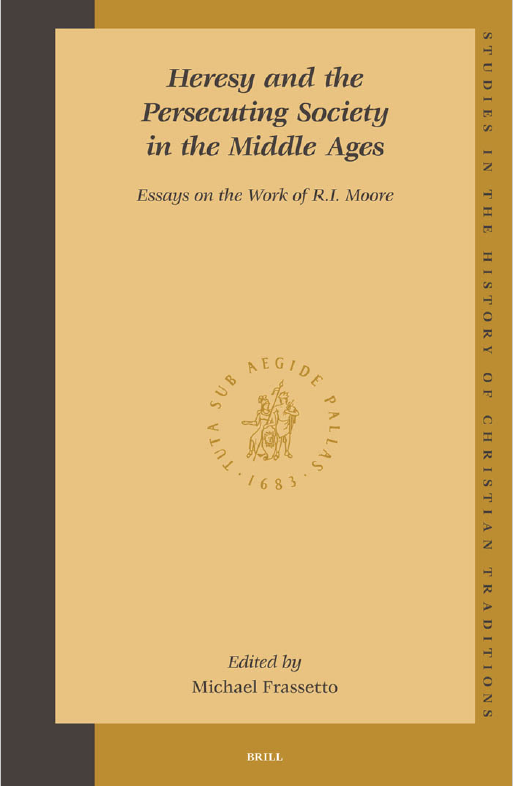 One more note on the medieval Cathars and their use of the Ascenion of Isaiah. . . . .
One more note on the medieval Cathars and their use of the Ascenion of Isaiah. . . . .
Among the texts that they obtained from the Bogomils was the Vision of Isaiah (chapters 6-11 of Asc.Isa.), a Greek Gnostic text of the first century A.D., which presented a cosmic view of the creation that was in conformity with dualist beliefs. The Cathars did not use the partial Latin translation made in late antiquity, but commissioned a new Latin translation from the Old Slavonic text, a version which the Bogomils had amended to conform with their own teachings.38
(Hamilton, 107f)
The author is relying on R. H. Charles — as per the footnote:
38 The medieval Latin version exists only in a text printed at Venice in 1522 by Antonio de Fantis and reprinted by A. Dillmann, Ascensio Isaiae Aethiopice et Latine (Leipzig: F.A. Brockhaus, 1877), 76–83. It was read by the moderate dualists of Lombardy, Moneta di Cremona, II, ix, 4, ed. Ricchini, p. 218. For the full edition of the texts in all versions: R.H. Charles, The Ascension of Isaiah (London: Adam and Charles Black, 1900).
(Hamilton, 108)
But a question arises. If the Cathars held a belief in an appearance of Jesus into another world beyond ours, where he was both born and crucified, what need would there have been to modify the Asc. Isa. by removing that “little gospel”? Surely it could be understood as happening in that other world. If the original Asc. Isa. lacked that passage depicting Jesus’ birth in Bethlehem and eventual crucifixion in Jerusalem it presumably was not because the original audience for the text related in any way to the beliefs in the “other world” later reflected among the Cathars.
Hamilton, Bernard. 2006. “Bogomil Infuences on Western Heresy.” In Heresy and the Persecuting Society in the Middle Ages: Essays on the Work of R.I. Moore, edited by Michael Frassetto, 93–114. Leiden ; Boston: Brill Academic Publishers.
If you enjoyed this post, please consider donating to Vridar. Thanks!

The belief in two crucifixions is one of their more secret teachings. They don’t preach it openly, for fear that the people is scandalized.
(from Liber supra stella, ed. in I. von Döllinger, Beiträge, op. cit. p.81)
That assertion comes from Sacconi and was quoted in the previous post. But it doesn’t remove the problem: secret or not, the question remains unanswered.
In Revelation there is a birth in heaven. Hence the Cathars could accept it in Ascension of Isaiah, if they found it there.
That’s not the birth in the Asc. Isa. — the differences are obvious and many. But I’m trying to dig into the evidence, not surmise what “could have been”. It’s slow going because it appears most of the studies that explore the depths of the niche I want are in Italian or French — and the sources themselves are in Latin. Not insuperable barriers, but they do make for slow progress.
The primary question that I am attempting to explore here is what the Ascension of Isaiah looked like for the Cathars. That has some relevance to the problem of the original character of the document. According to R.H. Charles the Asc Isa was doctored by dualistic groups (let’s not call them “heretics”) in the Bulgarian/Slavonic region and introduced to others who came to be known as Cathars in northern Italy and southern France. The doctoring is said to have been primarily in the excision of 11:2-22 — the “pocket gospel” depicting the birth of Jesus in Bethlehem and then his death “in Jerusalem”.
If there appears to have been no doctrinal necessity for Cathars to have removed that section then that situation has consequences for the argument concerning the originality of 11:2-22.
It is far from a decisive argument. But it is one that deserves some consideration, I think. And besides, there is so much more primary source material concerning the beliefs of the Cathars and their views and use of various documents, the Asc. Isa. included (and they used other canonical and non-canonical sources, too), that unless someone more familiar with all the sources comes along to help me out I am going to take a long time sorting things out, to whatever extent possible, myself.
Why rely on Charles? More recent scholarship supports L2 and S as dependent on a lost Greek version, which did not have the pocket gospel. See M. Knibb in his AoI introduction in The Old Testament Pseudepigrapha, vol 2, pages 145-146. Jonathan Knight also agrees with this.